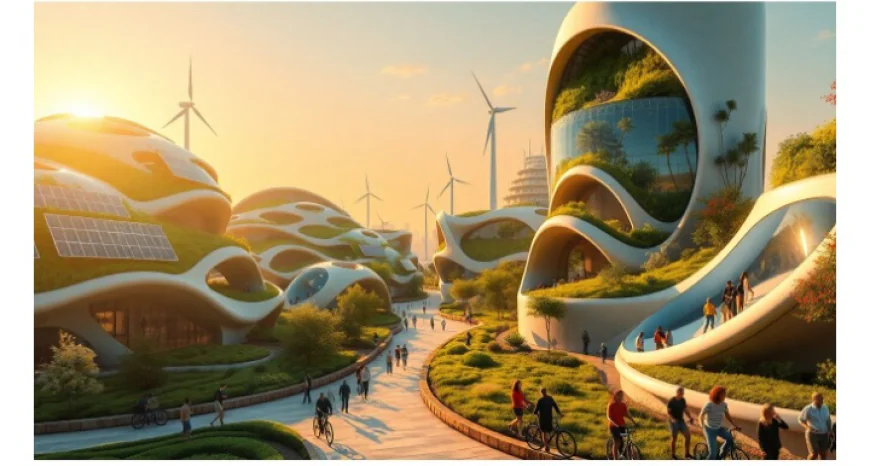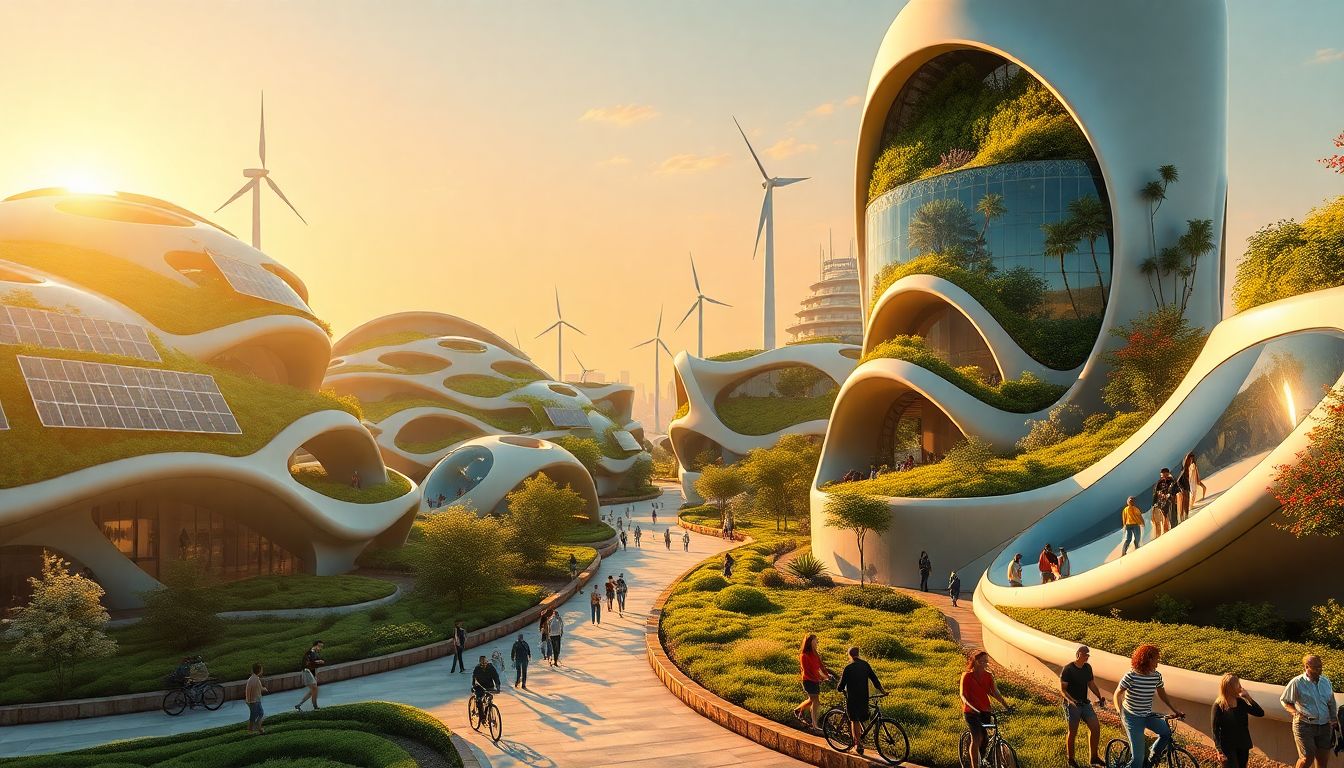How Circular Design is Changing the Way We Build Everything
Building things is a major part of our lives. But with climate change and running out of natural resources, we need to find better ways. Traditional construction often wastes materials and harms the environment. That’s where circular design comes into play. It’s a fresh way of thinking that can change how we build homes, offices, and even cities. By focusing on using resources wisely, it helps save money, reduce waste, and protect our planet. This new approach isn’t just good for the environment—it’s also good for business and communities.


How Circular Design is Changing the Way We Build Everything
Introduction
Building things is a major part of our lives. But with climate change and running out of natural resources, we need to find better ways. Traditional construction often wastes materials and harms the environment. That’s where circular design comes into play. It’s a fresh way of thinking that can change how we build homes, offices, and even cities. By focusing on using resources wisely, it helps save money, reduce waste, and protect our planet. This new approach isn’t just good for the environment—it’s also good for business and communities.
The Fundamentals of Circular Design in Construction
What is Circular Design?
Circular design is all about making buildings and products in a way that keeps resources in use longer. Instead of throwing things away, we aim to reuse, recycle, or even regenerate natural systems. This method follows core ideas: eliminate waste, keep materials circulating, and restore ecosystems. It’s the opposite of the old "take-make-dispose" model, where everything ends up as trash. Instead, circular design treats resources like a loop—constantly renewing and reusing.
The Shift Towards Sustainable Building Practices
Around the world, countries are setting goals to cut pollution and use fewer resources. These efforts align with the United Nations’ Sustainable Development Goals. More architects and builders now want eco-friendly buildings. Circular design fits perfectly with this shift. It makes construction smarter, reducing environmental harm and creating healthier spaces for people.
Key Components of Circular Design
Several strategies help make circular design work:
- Material innovation and design for disassembly: Creating parts of a building so they can be taken apart and reused easily.
- Modular and flexible components: Using parts that can be rearranged or replaced over time.
- Renewable, recyclable, and biodegradable materials: Choosing resources that are easy to renew or break down without pollution.
How Circular Design is Reshaping Building Materials and Methods
Reusable and Recyclable Materials
Many projects now use reclaimed wood, recycled steel, and eco-friendly plastics. These choices cut down on new resource extraction and waste. For example, some workplaces use old shipping containers to build offices. This keeps usable materials out of landfills and lowers costs. Such practices boost sustainability and show how reuse can be smart and stylish.
Innovative Construction Techniques
Prefab or modular construction allows sections of a building to be made off-site and assembled later. This method reduces trash on the construction site and makes upgrades easier. Some buildings are designed to grow or change with their users, extending their life span and saving money. These new techniques turn old methods into smarter solutions.
Material Passports and Digital Tracking
Thanks to technology, we can now keep digital records of every material used in a building. This is known as a "material passport." It tracks where materials came from, how long they last, and how easy they are to reuse. It simplifies recycling and helps builders make smarter choices—saving resources and money in the long run.
Circular Design in Architectural Planning and Urban Development
Designing for Flexibility and Adaptability
Buildings and cities need to be flexible. Spaces should be easy to change for different uses or future needs. For instance, a school might be turned into apartments later. Creating flexible urban infrastructure makes communities more resilient and reduces the need to demolish and rebuild.
Regenerative Urban Projects
Some projects go beyond sustainability—they actually help the environment. BedZED in London is a prime example. It uses renewable energy and recycled materials and encourages green living. Such projects cut pollution, save resources, and foster tight-knit communities.
Integration with Circular Economy Principles
Growing awareness encourages sharing ideas among architects, engineers, and policymakers. By working together, they can create laws and programs that support circular building practices. Policies like incentives for recycling or using recycled materials make it easier for the industry to transform.
The Business and Economic Impact of Circular Design
Cost Savings and Lifecycle Value
Although the initial costs of circular building practices can be high, they pay off over time. Buildings designed for durability, reusability, and easy upgrades last longer and are more valuable. Cost data show that sustainable buildings often save money on energy, maintenance, and waste disposal.
Market Trends and Industry Adoption
More clients want eco-friendly and flexible buildings. Companies like Loop and Plastic Bank are pioneering initiatives that tie reuse and recycling into business models. As demand grows, more firms are adopting circular design to stay competitive.
Challenges and Opportunities
Barriers exist, like strict regulations, higher upfront costs, and knowledge gaps. Yet, these challenges open doors for innovation. New materials, better training, and government support can help industry players turn these hurdles into opportunities—creating jobs and opening markets.
Future Outlook: The Role of Circular Design in Next-Generation Building
Emerging Technologies and Innovations
Advances like 3D printing and bioplastics will speed up circular construction. Imagine printing complex building parts on-site or using biodegradable materials that break down harmlessly. Artificial intelligence and Internet of Things (IoT) devices can also manage resources, ensuring efficiency from start to finish.
Policy and Regulatory Developments
New rules and standards could push us toward a circular economy. Countries already have examples of laws that promote reuse and recycling in construction. The right policies can make sustainable building the norm rather than the exception.
Call to Action for Industry Stakeholders
Architects, developers, and policymakers need to act now. Education and pilot projects show the benefits of circular design. Investing in research and development accelerates change. By working together, they can build a future where reuse and regeneration are the norms.
Conclusion
Circular design is reshaping how we build and plan our surroundings. It’s about making smarter choices—using resources efficiently, reducing waste, and creating buildings that last. The benefits go beyond the environment; they boost economies and strengthen communities. Industry leaders who adopt circular principles today help shape a sustainable tomorrow. The future of construction is circular—are you ready to be part of it?
Key Takeaways
- Circular design cuts waste and conserves resources by rethinking construction processes.
- Using modular, recyclable, and adaptable strategies is essential for building sustainably.
- Policymakers and industry leaders play a key role in promoting circular economy practices.
- Advances in technology and innovative materials boost progress toward circular built environments.



 VARSHITHA
VARSHITHA